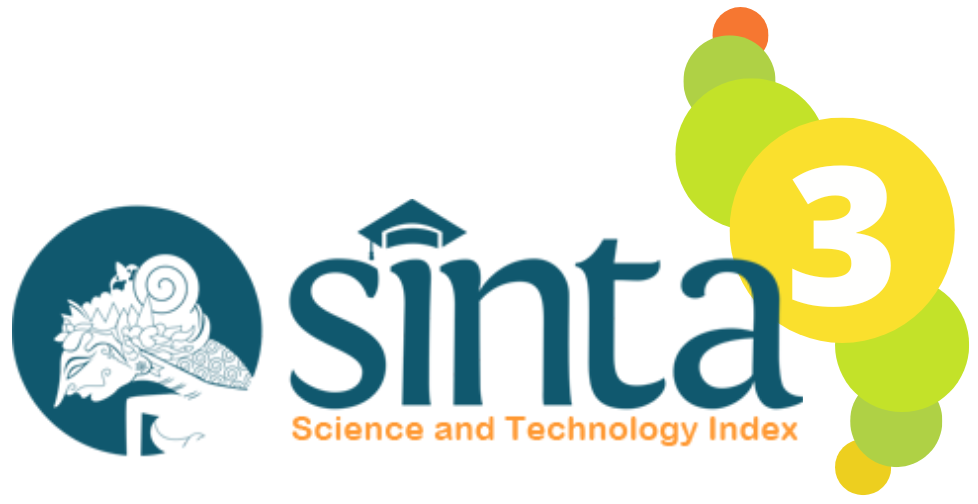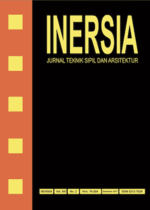Performance of Dodging Channels and Cofferdams Against Flood Flows in the Construction of Bener Dams
DOI:
https://doi.org/10.21831/inersia.v19i2.58182Keywords:
Bener Dam, cofferdam, diversion tunnel, HEC-RASAbstract
Bener Dam is one of the new dams built in Bogowonto River, in Guntur Village, Bener District, Purworejo Regency. Bener Dam was constructed to fulfill the irrigation and raw water demand, and also as a flood control, and a micro-hydro power plant, conservation, and tourism that can improve the economy. The diversion works of the Dam consist of the construction of a cofferdam and a diversion tunnel. The cofferdam and diversion tunnel need to be planned well to prevent the river from overflowing through the main dam and causing material losses and casualties. Therefore it is necessary to study the performance of cofferdam and the diversion tunnel of Bener Dam against the flood discharge. In this study, the diversion tunnel flood routing was carried out by HEC-RAS software version 4.1.0. The design flood uses return periods of 25 and 50 years. The flood routing simulation is carried out by two scenarios: the flow simulation on the existing conditions and the flow simulation on the diversion tunnel. The research results show that the Bogowonto River still can accommodate 25-year, and 50-year floods along the river channel. The cofferdam with a peak elevation of +235 m which is designed with a discharge of 410 m3/s is also capable of diverting the flood discharge with a return period of 25 years and 50 years. The diversion tunnel of Bener dam is planned by a horseshoe shape F, with a 25-year flood design with 7m tunnel diameter Based on the flood routing analysis, it was found that the maximum water elevation in the diversion tunnel was +221 m, and with outflow of 332 m3/s. The 50-year flood routing in the diversion tunnel results maximum water elevation of +222 m with an outflow of 396 m3/s. The flood simulation shows the flow characteristics in the diversion tunnel in the form of open channel flow because the tunnel is not filled by water. Then, the maximum flow velocity on the diversion tunnel is ±14.3 m/s which exceeds the permissible velocity so it can cause damage due to erosion and affect the amount of sediment transport.
References
PT. Indra Karya, "Laporan Akhir Desain Lanjutan dan Sertifikasi Bendungan Bener," Yogyakarta, 2015.
R. Vanijjirattikhan, C. Thongthamchart, P. Rakcheep, U. Supakchukul, and J. Suwatthikul, "Reservoir flood routing simulation for dam safety management in Thailand," Journal of Disaster Research, vol. 16, no. 4, 2021, doi: 10.20965/JDR.2021.P0596.
P. Choudhury, R. K. Shrivastava, and S. M. Narulkar, "Flood Routing in River Networks Using Equivalent Muskingum Inflow," J Hydrol Eng, vol. 7, no. 6, pp. 413–419, Nov. 2002, doi: 10.1061/(ASCE)1084-0699(2002)7:6(413).
Sri Harto B, Hidrologi: Teori, Masalah, Penyelesaian. Nafiri Offset, 2000.
Bambang Triatmodjo, Hidrologi Terapan . Yogyakarta: Beta Offset, 2008.
Istiarto, Modul Pelatihan Pemakaian HEC-RAS. Yogyakarta, 2014.
V. Te Chow, "Handbook of applied hydrology," International Association of Scientific Hydrology. Bulletin, vol. 10, no. 1, 1965, doi: 10.1080/02626666509493376.
JAXA Global Rainfall Watch, "JAXA Global Rainfall Watch (GSMaP)," JAXA.
M. D. Syaifullah, "Validasi Data Trmm Terhadap Data Curah Hujan Aktual Di Tiga Das Di Indonesia," Jurnal Meteorologi dan Geofisika, vol. 15, no. 2, pp. 109–118, 2014, doi: 10.31172/jmg.v15i2.180.
Joko Sujono, "Penurunan Hidrograf Satuan dengan Data Hujan Harian," Media Teknik, vol. 1, no. 1, 2013.
Joko Sujono, "Design Unit Hydrograph Theory," in Yogyakarta: Eleventh Congres of The Asia and Pacific Division of the International Association of Hydraulic Research, Yogyakarta, 1998.
D. Maulana, "Kajian Banjir DAS Bogowonto di Kabupaten Purworejo," Thesis, Universitas Gadjah Mada, Yogyakarta, 2016.
Downloads
Published
How to Cite
Issue
Section
License
Authors who publish with INERSIA journal agree to the following terms:
- Authors retain copyright and grant the INERSIA journal right of first publication with the work simultaneously licensed under Creative Commons Attribution License (CC BY 4.0) that allows others to share the work with an acknowledgment of the work's authorship and initial publication in this journal.
- Authors can enter into separate, additional contractual arrangements for the non-exclusive distribution of the published version of the work (e.g., post it to an institutional repository or edit it in a book), with an acknowledgment of its initial publication in this journal.
- Authors are permitted and encouraged to post their work online (e.g., in institutional repositories or on their website) before and during the submission process, as it can lead to productive exchanges, as well as earlier and greater citation of published work.

INERSIA by https://journal.uny.ac.id/index.php/inersia was distributed under a Creative Commons Attribution 4.0 International License











